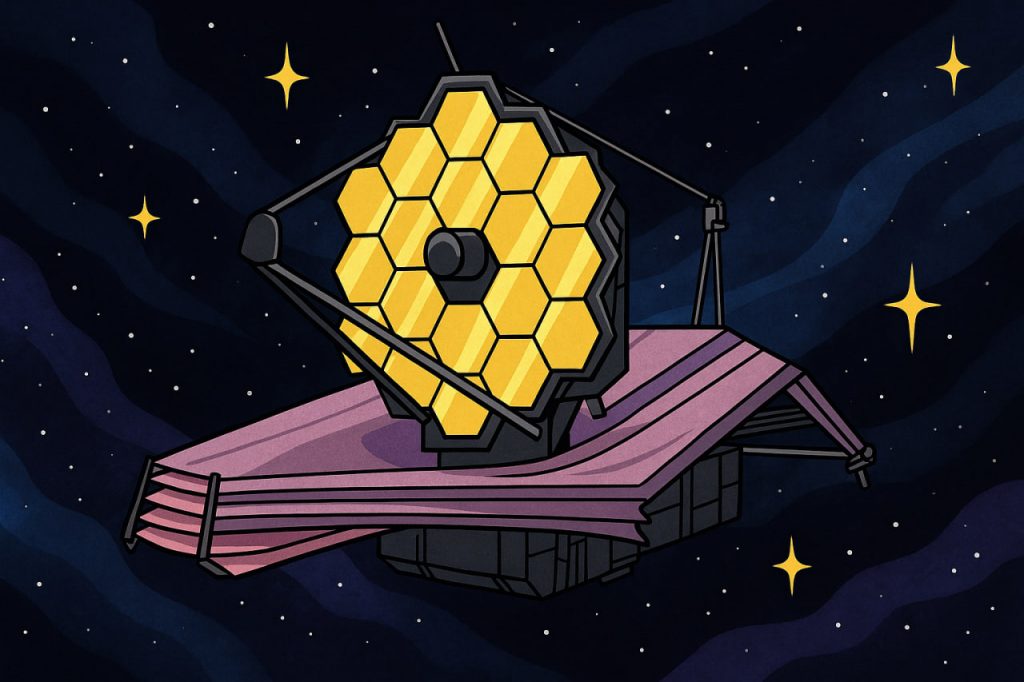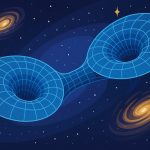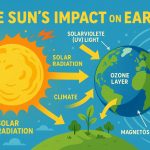The James Webb Space Telescope (JWST) is the most advanced and powerful space observatory ever launched. Developed by NASA in collaboration with ESA (European Space Agency) and CSA (Canadian Space Agency), it was designed to observe the universe in infrared light, allowing scientists to see deeper into space and further back in time than ever before. Unlike its predecessor, the Hubble Space Telescope, which mainly uses visible and ultraviolet light, JWST operates primarily in the infrared spectrum.
Position and Structure
The JWST orbits around the second Lagrange point (L2), located about 1.5 million kilometers from Earth. This location ensures that the telescope remains shielded from the heat of the Earth and Sun, which is critical for observing faint infrared signals. The telescope’s sunshield, which is the size of a tennis court, blocks heat and light from the Sun, keeping the instruments at extremely low temperatures.
Its primary mirror is 6.5 meters in diameter and consists of 18 hexagonal gold-coated segments. This large mirror collects much more light than Hubble, allowing JWST to see distant galaxies, stars, and planets with unmatched clarity. The telescope had to be folded to fit into the launch rocket and then carefully unfolded in space, a process that took several weeks and involved hundreds of steps.
Instruments Onboard
JWST is equipped with four main scientific instruments:
- NIRCam (Near Infrared Camera) – used for detecting distant galaxies and stars
- NIRSpec (Near Infrared Spectrograph) – analyzes light to determine the composition and motion of cosmic objects
- MIRI (Mid-Infrared Instrument) – observes cooler objects like dust clouds and exoplanets
- FGS/NIRISS (Fine Guidance Sensor/Near Infrared Imager and Slitless Spectrograph) – assists in focusing and guides the telescope’s position
Each of these instruments is cooled and shielded to detect extremely faint signals from space without interference from the telescope itself.
What Can JWST Observe?
JWST was built to answer fundamental questions in cosmology, stellar evolution, and planetary science. It can observe:
- The earliest galaxies formed after the Big Bang
- The birth of stars inside dusty nebulae
- Atmospheres of exoplanets, detecting gases like water vapor or methane
- Star systems and planets in the Milky Way
Because it captures infrared light, JWST can see through cosmic dust that would block visible light, giving astronomers a clearer view of hidden regions of the universe.
How Infrared Observation Works
Infrared light is a form of electromagnetic radiation with longer wavelengths than visible light. Most objects in space, including cold planets and gas clouds, emit infrared radiation. Observing in this spectrum allows JWST to detect heat signatures from objects that are otherwise invisible in optical telescopes.
To avoid interference, JWST must be kept extremely cold—about -233°C (40 K). The sunshield, remote location, and advanced cooling systems all help maintain this temperature and ensure accurate infrared readings.
Challenges and Achievements
Launching and operating JWST was a major technical challenge. Engineers had to design foldable components, ensure stability at L2, and coordinate between multiple international agencies. After its successful launch on December 25, 2021, the telescope completed its setup without any major errors—an extraordinary engineering feat.
Since becoming operational, JWST has delivered stunning images of deep space, revealed the structure of early galaxies, and provided detailed data on planetary atmospheres outside our solar system. It is expected to operate for at least 10 years, with possible extensions.
Glossary
- James Webb Space Telescope (JWST) – NASA’s flagship infrared space telescope
- Infrared light – electromagnetic radiation with wavelengths longer than visible light
- Lagrange point (L2) – a stable position in space where gravity and orbital motion balance
- Spectrograph – an instrument that breaks light into its spectrum for analysis
- Exoplanet – a planet that orbits a star outside our solar system
- Sunshield – a protective cover that blocks sunlight and heat from reaching the telescope
- Cosmic dust – tiny particles in space that can obscure visible light


